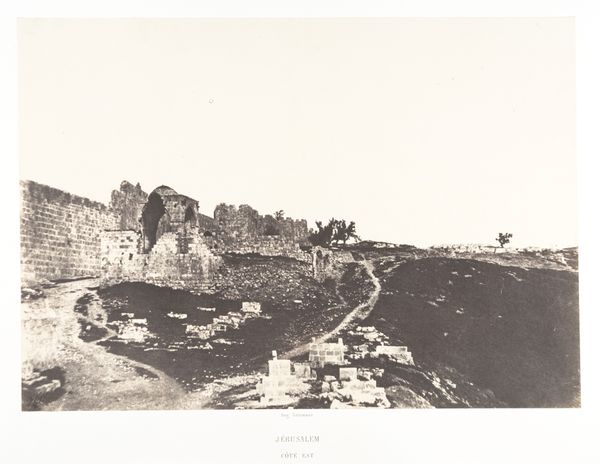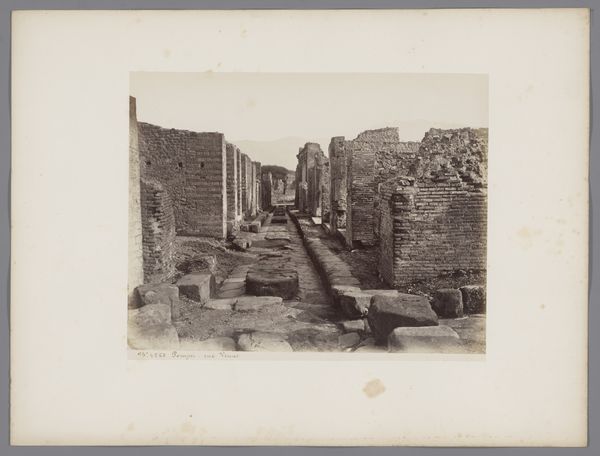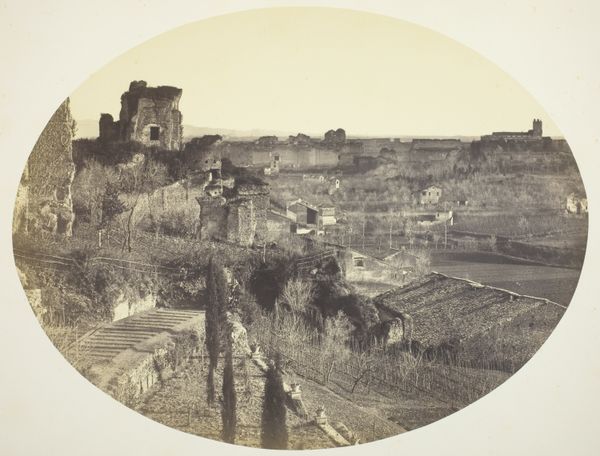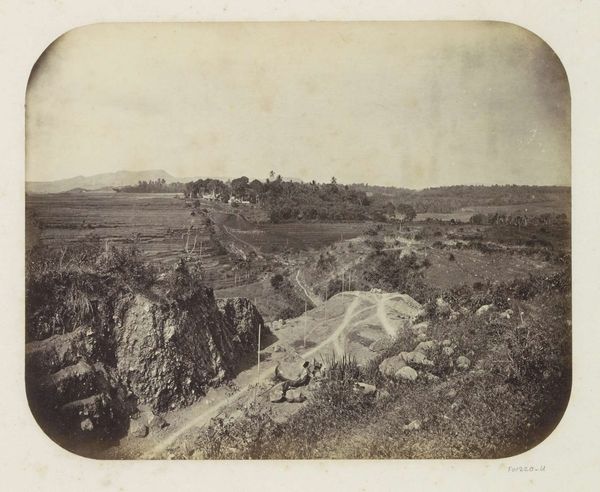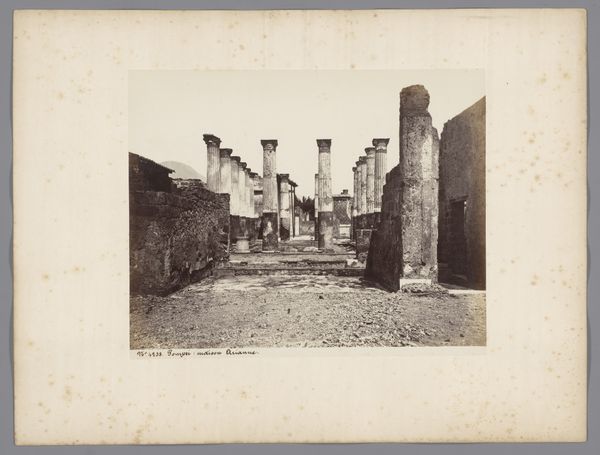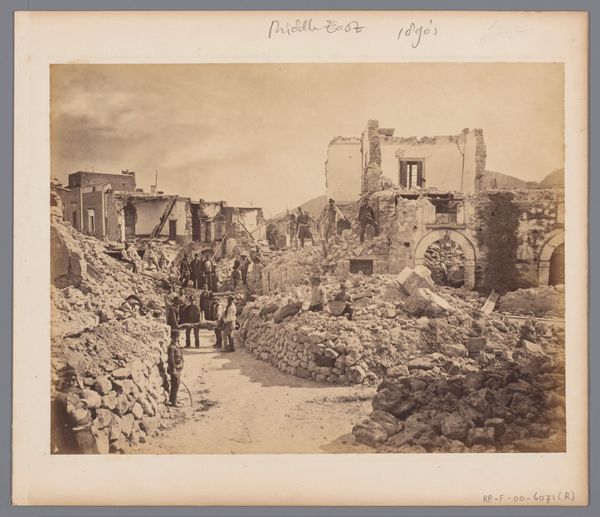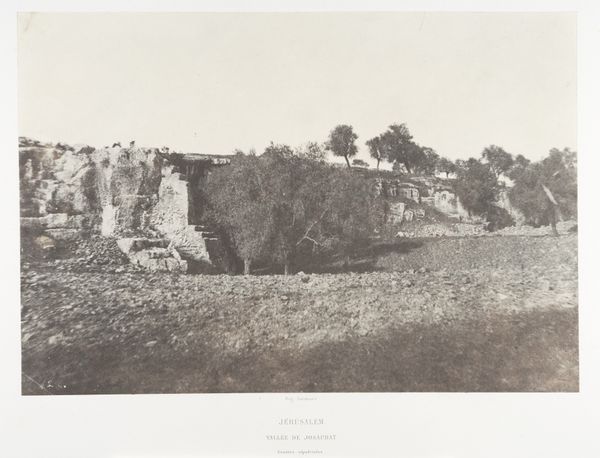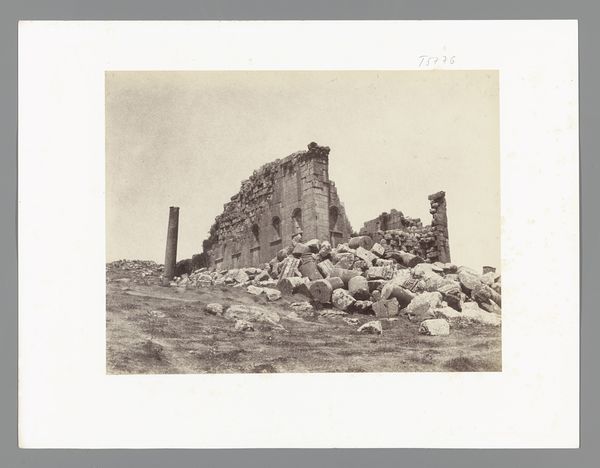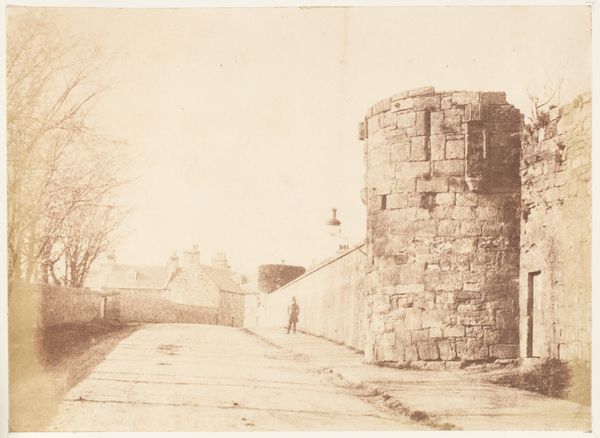
print, photography, gelatin-silver-print
# print
#
landscape
#
photography
#
romanesque
#
coloured pencil
#
ancient-mediterranean
#
gelatin-silver-print
#
cityscape
#
realism
Dimensions: height 320 mm, width 479 mm
Copyright: Rijks Museum: Open Domain
Curator: This albumen silver print, taken between 1857 and 1865 by Altobelli and Molins, depicts the Via Appia near Rome. Editor: What strikes me immediately is the dust and grit—you can almost feel it. The stark materiality of the ruins, the road itself... it’s very palpable, despite being a photograph. Curator: Indeed. The Via Appia, an ancient Roman road, here presented through the relatively new technology of photography. Think about the impact of widespread visual access to such historical sites and how it shifts the very understanding of classical antiquity. Editor: Exactly! It democratizes the experience. No longer just sketches and engravings for the elite. Here, we see the texture of the stone, the actual erosion… a physical record. The labor involved in constructing that road, the human impact over centuries—the photograph underscores that reality in a way paintings often gloss over. Curator: The ruined structures flanking the road highlight the rise and fall of empires. What was once a symbol of Roman power is presented in a state of decay, becoming an object of photographic capture for later consumption by tourists and historians alike. The politics of representing decline is key here. Editor: I am wondering about the production itself. The scale, the resolution possible for its time. It speaks to the technological innovations shaping art beyond painting and sculpture and questions the traditional art market. How does craft intersect with industry in these types of photographs, what types of labor was put on it, its conditions and accessibility? Curator: A relevant point to the discussions around cultural heritage! As viewers, are we mourning lost grandeur, or examining the continuous material transformations shaping our present? It is the layers of the story the photograph reveals, and conceals, which engage me. Editor: Absolutely. Looking at it more closely has also brought my focus toward laboring conditions that it presents, thank you for helping me go deep into this.
Comments
No comments
Be the first to comment and join the conversation on the ultimate creative platform.

